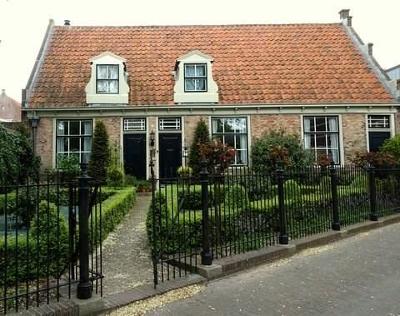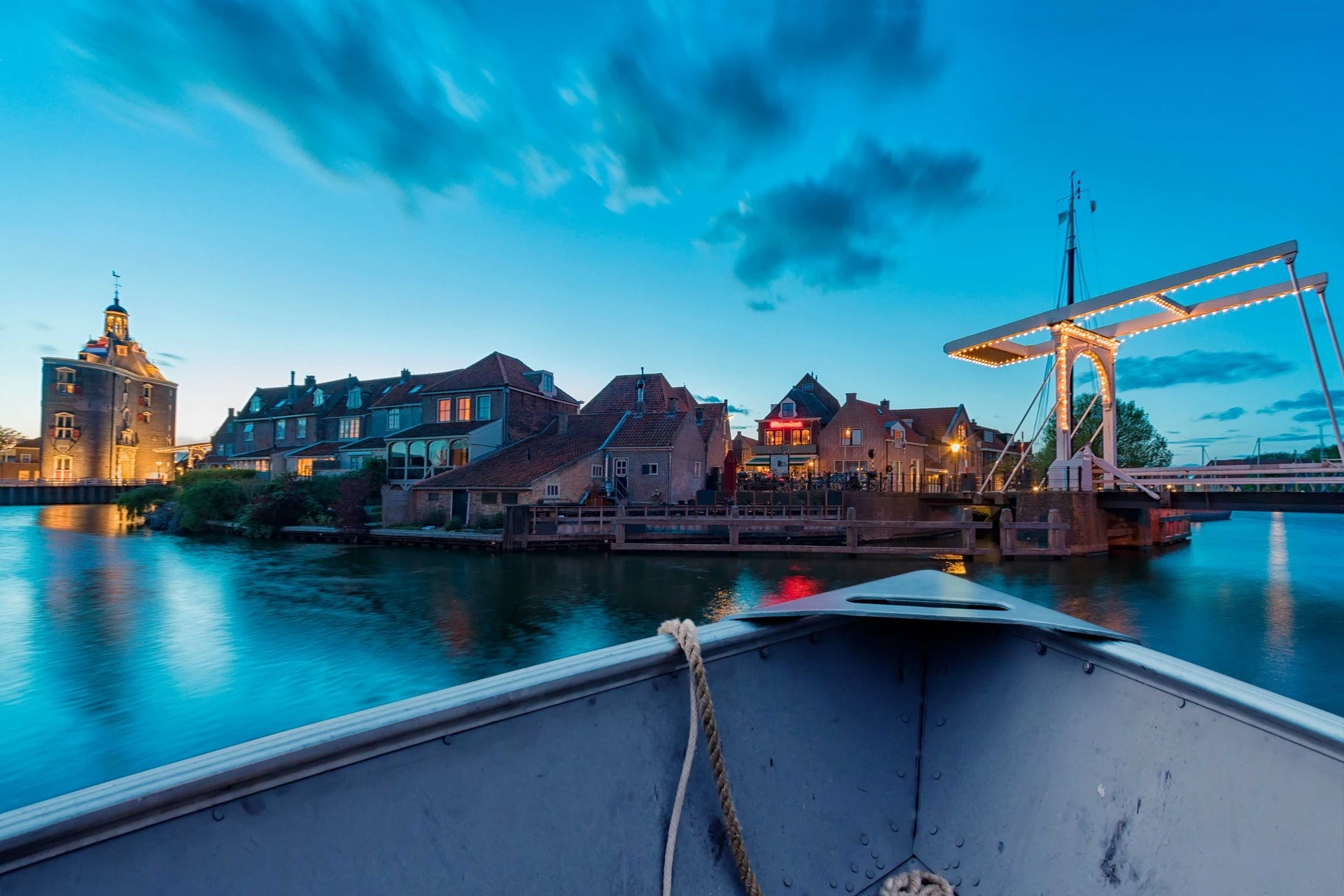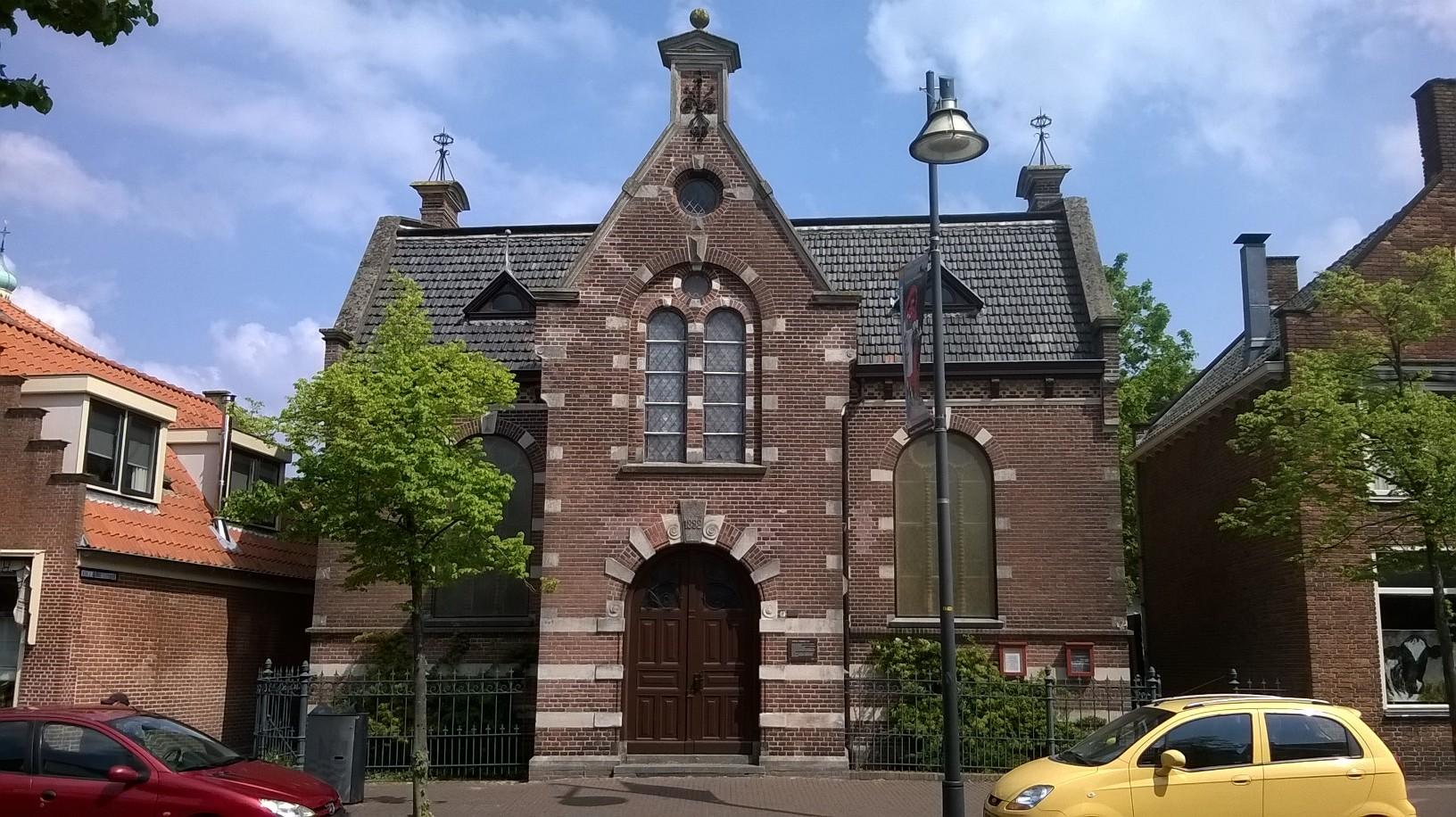
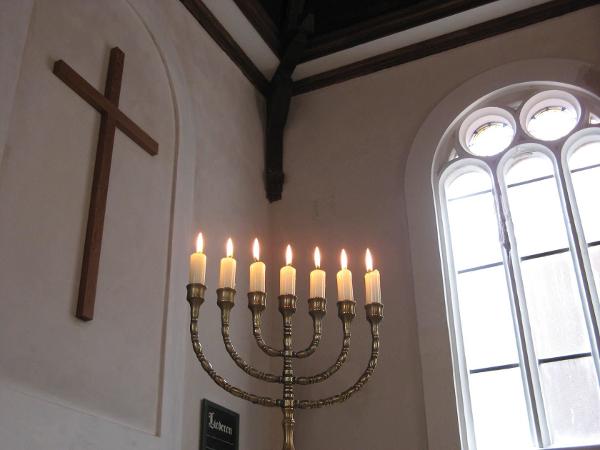
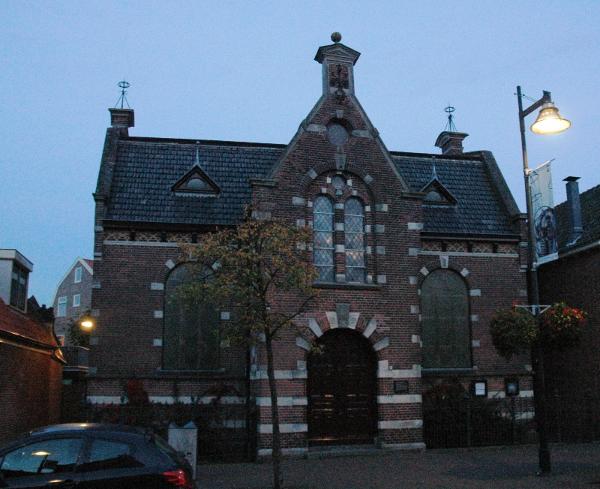
Doopsgezinde vermaning
The main shape and the interior, with the benches, the lectern and the copper chandelier, have been preserved intact. It is therefore a defining element in the street. It is a typical late 19th-century Vermaning in the built-up area, which openly enters the door. More than 200 years ago, the municipality bought the vacant church from the Jansenists, who had moved to the Breedstraat in the meantime. Until 1892, people went to church in that old church. The municipal authorities then advised to demolish the church, because it would pose a danger to the passing “good community”. The Venedie was then still partly a canal, which was filled in in 1903.
The architect of the municipality of Enkhuizen was commissioned to design a church building. For a long time it was thought that this was an original design, until more than 25 years ago the municipality decided to thoroughly restore its Vermaning. Of course, deep digging was done for all the information about the church. It turned out that a few years before 1891 the Mennonite community of Vlissingen had had a new church built. The city architect “borrowed” the drawings from this colleague from Zeeland and adapted the dimensions to the possibilities of Enkhuizen.
There is still a photo of the church of Vlissingen, which was completely destroyed by a bombardment in 1942. The current church bears no resemblance to the previous church of Vlissingen. Nevertheless, the Vermaning is so unique due to its style of construction that it was first on the provincial list of monuments and is now on the list of national monuments. The Mennonite church is of architectural-historical value: it is considered a representative example of a neo-renaissance church. The main shape and the interior, with the benches, the pulpit and the copper chandelier, have been preserved intact. It is therefore an iconic element in the street. It is a typical late 19th-century Vermaning in a built-up area, which openly enters the door.



